
 |
|
|
Fruits
Volume 65 Number 8 Date 06/18/2020 CODLING MOTH - Trap counts remain high at some sites. Economic captures of five or more moths per trap per week were reported from 9 of 29 cooperating locations (31%) from June 11-17. Apple growers are advised to continue monitoring degree days and CM counts until 650-700 units (modified base 50°F) have accumulated from the spring biofix to determine if additional late flights require treatment. Orchards that recorded biofix on May 24 have accumulated about 350-475 degree days. Locations with a later June 1 biofix are at 250-350 degree days. Signs of fruit damage are becoming apparent, and scouting fruits for tiny, circular entry wounds is advised. ROSE CHAFER - This generalist pest is appearing in vineyards and orchards. Scouting twice weekly is advised for sites on sandy soils and those with a history of rose chafer problems once the first beetle is observed. An average of two beetles per vine has been suggested as the basis for initiating controls, although the feeding period is usually brief (<3 weeks) and the beetles usually disappear by July without causing significant damage. Commercially available traps can attract beetles from surrounding areas and are not recommended for use in vineyards. SAN JOSE SCALE - Monitoring for crawlers should begin now in known orchard hotspots, by applying black electrical tape to infested scaffold branches. The tape must be wrapped adhesive side-down, with a thin layer of petroleum jelly applied to the non-sticky outer side. Concentrate taping on younger limbs (2-3 inches in diameter) in blocks with a history of SJS damage. A 10x hand lens is required to view the oval, bright-yellow crawlers. A capture of 10-15 crawlers in a few days, or 10 crawlers on one tape, may warrant control. SPOTTED WING DROSOPHILA - The first SWD flies are likely emerging from wild hosts. Earliest first capture dates for SWD in Wisconsin have ranged from June 1 in 2018 to June 19 last season. Berry growers should intensify monitoring and scouting efforts at this time, and prepare to implement SWD treatment programs. Commercial SWD traps and lures are available through Great Lakes IPM, or growers can make their own traps using a clear plastic deli container baited with either a yeast-sugar mix (one tablespoon of active dry yeast plus four tablespoons of sugar dissolved in 12 ounces of water) or apple cider vinegar. A few drops of unscented dish soap should be added to the homemade traps to break the surface tension and kill the flies. APPLE MAGGOT - Emergence of flies from the soil could begin in advanced locations before the end of the month. This annual event corresponds with the accumulation of 900 degree days (modified base 50°F) when soil moisture is appropriate. Apple maggot traps should be placed next week in perimeter trees adjacent to abandoned orchards or woodlots to capture the earliest flies. REDBANDED LEAFROLLER - Moth counts are expected to increase again by early July as the second flight starts. Minimal RBLR activity was noted again this week, with average counts varying from 0-10 moths per trap and averaging only two per trap. -- Krista Hamilton, DATCP Entomologist 
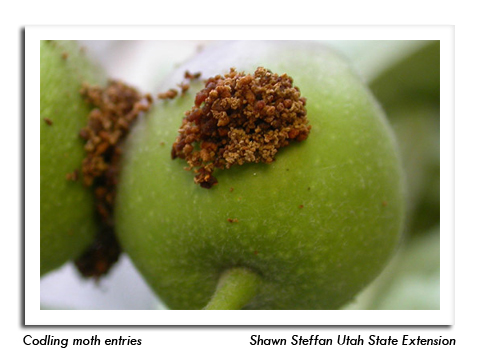
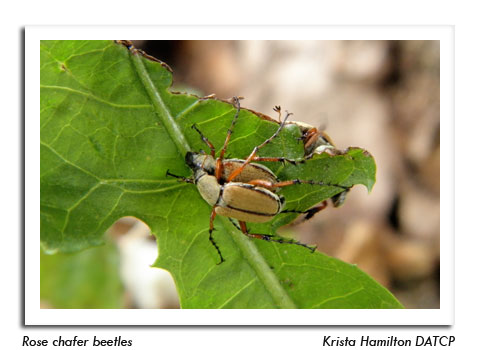
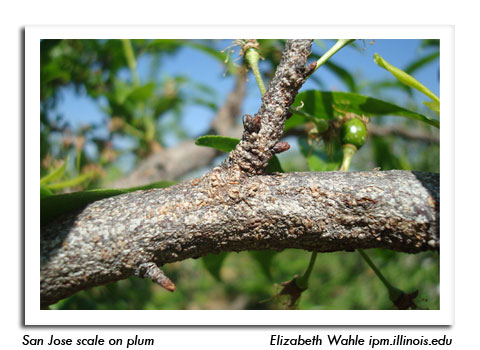
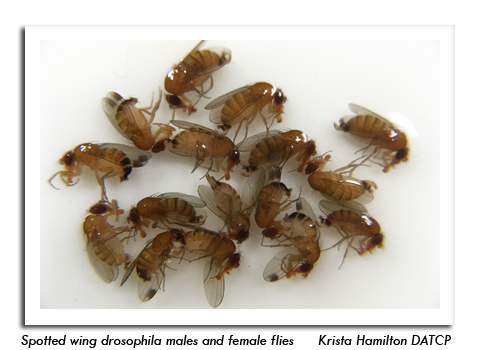
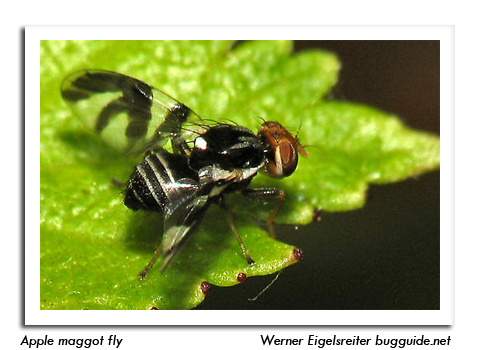
|
|
|